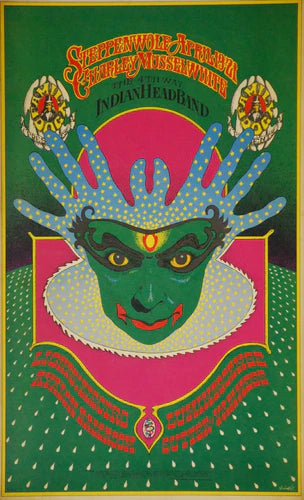
The Psychology of Vintage Poster Design: Why It Still Captivates
Share
The Psychology Behind Effective Poster Design
1. Emotional Resonance
- Vintage posters often evoke strong emotions through their use of color, imagery, and typography. Designers of the past understood the power of emotional appeal, leveraging it to create memorable and persuasive visuals.
- Warm Colors: Red, yellow, and orange dominate many vintage posters, evoking excitement, energy, and passion. These colors naturally draw attention and create a sense of urgency.
- Nostalgia: By showcasing familiar scenes, styles, or cultural touchstones, vintage posters tap into feelings of nostalgia, creating an emotional connection with viewers.
2. Simplicity and Clarity
- Unlike modern designs that can be cluttered with information, vintage posters are often characterized by their simplicity. They focus on a single, powerful message or image, making them easy to understand at a glance.
- Gestalt Principles: Designers employed Gestalt principles like proximity and similarity to create harmonious compositions that are visually appealing and easy to interpret.
- Hierarchy: Clear visual hierarchies guide the viewer’s eye, emphasizing key elements like the product name or central figure.
3. The Power of Typography
- Typography in vintage posters often plays a central role in communicating the message. Bold, decorative fonts evoke the era and complement the imagery, enhancing the overall design.
- Psychological Impact: Fonts like Art Nouveau’s flowing scripts or Deco’s geometric forms create distinct moods, influencing how viewers perceive the poster’s message.
4. Cultural Significance
- Vintage posters often reflect the values, trends, and aesthetics of their time. They serve as cultural artifacts that encapsulate societal aspirations and ideals, resonating with contemporary audiences and evoking curiosity about the past.
Why Vintage Posters Still Captivate Today
1. Timeless Aesthetics
- The bold lines, vibrant colors, and elegant typography of vintage posters transcend trends, offering a timeless appeal. These designs continue to influence modern advertising, interior decor, and graphic design.
2. Storytelling
- Every vintage poster tells a story—whether it’s promoting a product, celebrating a cultural moment, or advertising an event. This storytelling aspect engages viewers on a deeper level, creating a connection beyond the visual elements.
3. Artistic Value
- Many vintage posters were created by renowned artists, elevating them from mere advertisements to works of art. Collectors and enthusiasts appreciate their artistic craftsmanship, which contributes to their enduring popularity.
4. Nostalgia and Authenticity
- Vintage posters evoke a sense of nostalgia, transporting viewers to a simpler time. Their authenticity and historical value make them desirable for both personal enjoyment and as conversation pieces in home decor.
Top 3 Vintage Poster Artists
1. Henri de Toulouse-Lautrec
- Toulouse-Lautrec revolutionized poster art in the late 19th century, capturing the vibrancy of Parisian nightlife with bold compositions and innovative techniques. His work, such as Moulin Rouge: La Goulue (1891), epitomizes the emotional and aesthetic appeal of vintage posters.
- Example: https://www.metmuseum.org/art/collection/search/337617
2. Alphonse Mucha
- Known as the father of Art Nouveau, Mucha’s intricate, decorative posters featuring ethereal women and floral motifs have become iconic. Works like Job Cigarettes (1896) demonstrate his mastery of combining beauty and functionality.
- Example: https://www.muchafoundation.org/gallery/themes/posters
3. Leonetto Cappiello
- Cappiello’s bold, minimalist designs marked a shift in poster art. Often called the "father of modern advertising," his works like Maurin Quina (1906) showcase striking visuals and a clever use of negative space.
- Example: https://www.vam.ac.uk/articles/leonetto-cappiello-posters
Examples of Vintage Poster Design Principles
Emotional Impact
- Toulouse-Lautrec’s Moulin Rouge: The use of warm colors and dynamic composition captures the excitement of Parisian cabaret.
- View: https://www.metmuseum.org/art/collection/search/337617
Simplicity
- Cappiello’s Maurin Quina: The stark contrast between the green devil and the black background immediately draws the viewer’s eye.
- View: https://www.vam.ac.uk/articles/leonetto-cappiello-posters
Typography
- Mucha’s Job Cigarettes: Decorative lettering integrates seamlessly with the artwork, creating a cohesive and elegant design.
- View: https://www.muchafoundation.org/gallery/themes/posters
Incorporating Vintage Posters into Modern Spaces
1. Home Decor
- Use vintage posters as statement pieces in living rooms or offices. Their bold designs add character and charm to any space.
- Frame posters with archival materials to preserve their condition while showcasing their beauty.
2. Thematic Collections
- Curate a collection of posters based on themes such as travel, entertainment, or advertising to create a cohesive display.
3. Mixing Eras
- Combine vintage posters with contemporary artwork to create an eclectic and visually engaging aesthetic.
Conclusion
The psychology of vintage poster design reveals why these works continue to captivate audiences. By harnessing emotional resonance, simplicity, and cultural significance, vintage posters transcend their original purpose to become enduring symbols of art and history. Whether you’re drawn to the vibrant nightlife of Toulouse-Lautrec’s Paris, the ethereal elegance of Mucha’s Art Nouveau, or the striking minimalism of Cappiello, these designs remain as relevant and compelling today as when they were first created.
Explore, collect, and preserve these timeless treasures to appreciate their lasting impact and the artistry they represent.





